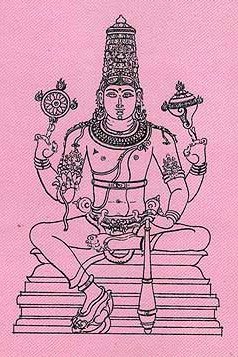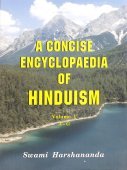Digbandhana, Dish-bandhana: 4 definitions
Introduction:
Digbandhana means something in Buddhism, Pali, Hinduism, Sanskrit, Marathi. If you want to know the exact meaning, history, etymology or English translation of this term then check out the descriptions on this page. Add your comment or reference to a book if you want to contribute to this summary article.
In Hinduism
Pancaratra (worship of Nārāyaṇa)
Source: Shodhganga: Kasyapa Samhita—Text on Visha Chikitsa (p)Digbandhana (दिग्बन्धन) or Digbandhanamantra is the name of an Aṅga-Mantra performed along with touching the respective place in one’s body, according to the Kāśyapa Saṃhitā: an ancient Sanskrit text from the Pāñcarātra tradition dealing with both Tantra and Viṣacikitsā (Toxicology).—The Digbandhana-mantra is to be chanted with the Astramantra. The Digbandhana is as follows: namassudarśanāya svāhā astrāya phaṭ.

Pancaratra (पाञ्चरात्र, pāñcarātra) represents a tradition of Hinduism where Narayana is revered and worshipped. Closeley related to Vaishnavism, the Pancaratra literature includes various Agamas and tantras incorporating many Vaishnava philosophies.
In Buddhism
Tibetan Buddhism (Vajrayana or tantric Buddhism)
Source: OSU Press: Cakrasamvara SamadhiDigbandhana (दिग्बन्धन) refers to the “closing of the directions” and (as part of the Cakrasaṃvarasamādhi) represents to one of the various rituals typically performed as a part of the larger rites, according to Buddhist teachings followed by the Newah in Nepal, Kathmandu Valley (whose roots can be traced to the Licchavi period, 300-879 CE).—Cakrasaṃvara Samādhi, is the worship of the Cakrasaṃvara triple-wheel maṇḍala, also known as the trisamādhi; and also contains the instructions for nyāsa, the placement of deities on the body, worship of the mantrapātra, the digbandhana, “closing of the directions”, the śumbha-niśumbha-mantra, Heruka’s Essence mantra, Vajravārāhī’s Quintessence mantra, and the aṣṭapada-dhātumantra, “the eight-limbed root mantra” (mantras all from the root Cakrasaṃvara-tantra itself), the hasta-pūjā, "Hand Worship", [...]

Tibetan Buddhism includes schools such as Nyingma, Kadampa, Kagyu and Gelug. Their primary canon of literature is divided in two broad categories: The Kangyur, which consists of Buddha’s words, and the Tengyur, which includes commentaries from various sources. Esotericism and tantra techniques (vajrayāna) are collected indepently.
Languages of India and abroad
Marathi-English dictionary
Source: DDSA: The Molesworth Marathi and English Dictionarydigbandhana (दिग्बंधन).—n (S) Charming the quarters or regions. A practice of conjurers.
Marathi is an Indo-European language having over 70 million native speakers people in (predominantly) Maharashtra India. Marathi, like many other Indo-Aryan languages, evolved from early forms of Prakrit, which itself is a subset of Sanskrit, one of the most ancient languages of the world.
Kannada-English dictionary
Source: Alar: Kannada-English corpusDigbaṃdhana (ದಿಗ್ಬಂಧನ):—
1) [noun] a binding of, using mystical power, evil from causing harm to men, animals or materials.
2) [noun] a making of another’s limbs motionless or stiff using mystical ways.
3) [noun] a complete restriction; the state or fact of restricting or beingso restricted.
Kannada is a Dravidian language (as opposed to the Indo-European language family) mainly spoken in the southwestern region of India.
See also (Relevant definitions)
Partial matches: Dish, Bandhana, Dig, Bamdhana.
Starts with: Digbandhanamantra.
Ends with: Shulinidurgadigbandhana.
Full-text: Shulinidurgadigbandhana, Digbandha, Digubamdhana, Digbandhanamantra, Cakrasamvarasamadhi, Dhatumantra, Ashtapada, Trisamadhi.
Relevant text
Search found 1 books and stories containing Digbandhana, Dig-bandhana, Digbaṃdhana, Digbamdhana, Diś-bamdhana, Dis-bamdhana, Diś-bandhana, Dis-bandhana, Dish-bamdhana, Dish-bandhana; (plurals include: Digbandhanas, bandhanas, Digbaṃdhanas, Digbamdhanas, bamdhanas). You can also click to the full overview containing English textual excerpts. Below are direct links for the most relevant articles:
Shaiva Upanishads (A Critical Study) (by Arpita Chakraborty)
16. Rule relating to bathing in ashes (Bhasmasnāna) < [Chapter 2 - Greatness of Bhasma and Dhāraṇa]
Related products
